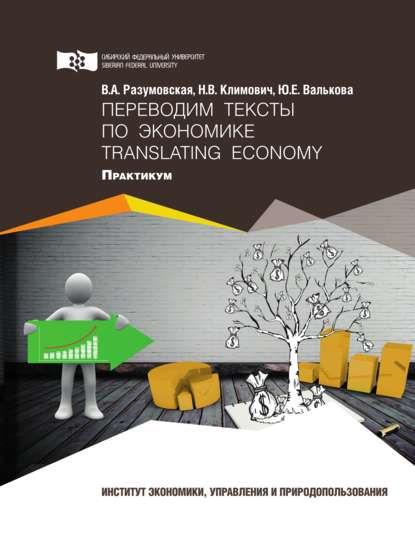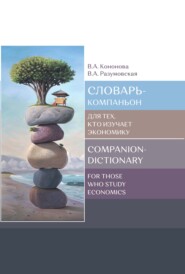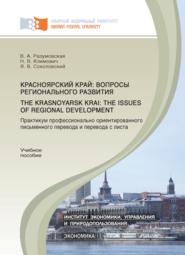По всем вопросам обращайтесь на: info@litportal.ru
(©) 2003-2024.
✖
Переводим тексты по экономике = Translating Economy
Год написания книги
2017
Настройки чтения
Размер шрифта
Высота строк
Поля
There are certainly signs the ECB could step up its game. ECB President Mario Draghi has hinted that that the bank could look to ramp up or extend its 1 trillion euro (USD 1.1 trillion) quantitative easing program.
At the moment, the ECB purchases 60 billion euros worth of assets each month and has committed to doing so until at least September 2016.
The next monetary policy meeting and subsequent media conference with Draghi is set for December 3 in Frankfurt, when an announcement on expanded asset purchases is hotly anticipated.
It is also possible that the central bank might cut the interest rate on its deposit facility further into negative territory. The rate is currently negative 0.2 percent, meaning that private banks are effectively charged for parking money with the ECB.
The bank is underweight on US equities and bonds.
“A weaker euro is likely to serve as a strong catalyst for outperformance of European versus US equities,” it said.
Another factor that may help to boost the Europe over US play: positioning for the monetary policy divergence appears to be light so far, Goldman said, citing action in risk reversals, Goldman said.
It tips one of the most direct plays on the divergence between monetary policies in US and Europe is to just short the euro. Its 12-month forecast for the euro is for it to fetch USD 0.95, but that might be reached sooner if the ECB moves aggressively in December, Goldman said. The euro was fetching USD 1.0611 in early European trade Thursday.
From: http://www.moneycontrol.com/news/european-markets/goldman:-why-europe-will-outperform_4357441.html
5. Find English equivalents to the following words and expressions from the text:
6. Make an English annotation of the text (100–120 words).
7. Translate your English annotation into Russian.
8. Find Russian equivalents to the following words and expressions:
Adj. + market: competitive market, active market, booming market, bullish market, lively market, strong market, thriving market, bull market, rising market, depressed market, dull market, sluggish market, weak market, bear market, falling market, steady market, buyer’s market, seller’s market.
Verb + market: put sth. on market, come on/onto market, develop market, break into market, get into market, penetrate market, capture market, corner market, monopolize corner market, supply corner market, flood corner market, loose corner market, depress corner market, play corner market.
Phrases with market: be in the marker for something, the bottom’s dropped/fallen out of the market, a gap in the market, the bottom/lower/ top/upper end of the market.
9. Give a written translation of the following extracts from Russian into English:
1. В процессе исторического развития рыночного (товарного) хозяйства изменялось понимание рынка и рыночного механизма, их сущности, изменялся и сам рынок, его механизм, вырастала их роль в экономике. Изначально термин «рынок» означал место, где продавцы и покупатели могли совершать обмен своими товарами. Например, центральная площадь города.
2. Рынок устанавливает ценностные эквиваленты для обмена продуктов. При этом рынок сопоставляет индивидуальные затраты труда на производство товаров с общественным эталоном, т.е. соизмеряет затраты и результаты, выявляет ценность товара посредством определения не только количества затраченного труда, но и количества пользы, которую несет товар для общества.
3. Торги на ключевых фондовых площадках Европы проходят сегодня преимущественно в негативном формате. К середине дня сводный Stoxx Europe 600 Index теряет около 0,5 %. Риски Brexit давят на фондовые активы. Во вторник премьер-министр Великобритании Тереза Мэй выступит с речью, посвященной позиции Лондона в ходе переговоров относительно выхода страны из ЕС.
4. Рынок продавца возникает, когда спрос значительно превосходит предложение. При этом для продавца сбыт не представляет особых трудностей. В условиях избыточного спроса (дефицита) товары все равно будут реализованы. Ему нецелесообразно заниматься какими-либо маркетинговыми мероприятиями, так как это будет означать лишь дополнительные затраты.
5. Проблема территориального охвата рынка решается предприятием в зависимости от его финансового состояния и особенностей предлагаемого товара. Большое значение имеет также наличие соответствующей инфраструктуры. Переход с одного уровня рынка на другой является формой диверсификации и обычно осуществляется в условиях жесткой конкурентной борьбы.
Unit 2
Warming Up Activity
1. Translate the dates from Russian into English:
18 апреля 1830 г., 31 декабря 2016 г., 5 октября 1986 г., 27 июля 2005 г., 15 марта 2045 г., 22 ноября 1876 г., 1 мая 20017 г., 27 сентября 1978 г., 24 января 1657 г., 14 февраля 2000 г., 6 августа 1305 г., 15 декабря 2015 г.
2. Say the time in English:
19.40, 18.25, 17.35, 19.45, 18.10, 13.56, 06.15, 23.17, 20.30, 00.12, 15.55, 17.10, 22.46, 16.18, 19.15, 14.35, 11.45, 16.00, 20.01, 18.19, 01.35, 03.10.
3. Say figures in words:
34 567; 678 556; 987; 789. 008; 4 678 098; 0,5432; 8.006; 11 034; 145, 076543; 420 160; 0,810; 905 029 491; 831 830; 56.042; 14 074; 10 894.
Reading
4. Read the text.
Factors Influencing Pricing Strategy in International Marketing
By Smriti Chand
Some of the most important factors influencing pricing strategy in international marketing are as follows:
Pricing decisions are complex in international marketing. A firm may have to follow different pricing strategies in different markets. Whatever might be the strategy followed, pricing has to reflect the proper value in the eyes of the consumer. Pricing is an important strategic and tactical competitive weapon that can be used by a firm in international marketing.
It represents that element of the marketing mix, which is controllable by the firm to a large extent. A firm should integrate pricing strategies with the other elements of the international marketing mix.
Choice of a pricing strategy is dependent on:
1) Corporate goals and objectives
2) Customer characteristics
3) Intensity of inter-firm rivalry
4) Phase of the product life cycle
Having considered the factors influencing the choice of strategy, let us now turn specifically to different strategies:
1) Skimming Strategies: one of the most commonly discussed strategies is the skimming strategy. This strategy refers to the firm’s desire to skim the market, by selling at a premium price. Skimming refers to the objective of achieving highest possible contribution in a short time. To use this approach, the product has to be unique and the target market should be willing to pay the high price. Success of this strategy depends on the ability and speed of competitive reaction. A firm with a small market share can face aggressive local competition when using skimming. Maintenance of high quality requires lot of resources. If the product is sold cheaply at home, then the problems of gray market can surface.
This strategy delivers results in the following situations:
i) When the target market associates quality of the product with its price, and high price is perceived to mean high quality of the product.
ii) When the customer is aware and is willing to buy the product at a higher price just to be an opinion leader.
iii) When the product is perceived as enhancing the customer’s status in society.
iv) When competition is non-existent or the threat from potential competition exists in the industry because of low entry and exist barriers.
v) When the product represents significant technological breakthroughs and is perceived as a ‘high technology’ product.








